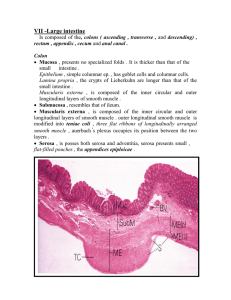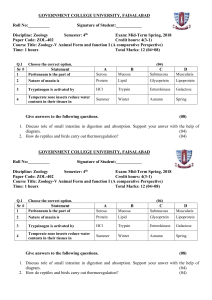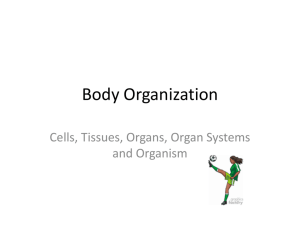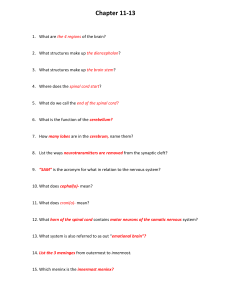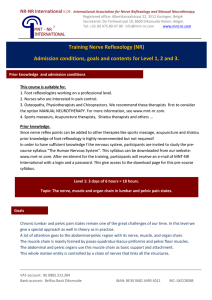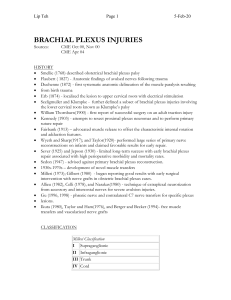Exercise 38- Histology General Histological Plan of the Alimentary Canal 4 Tunics:
advertisement
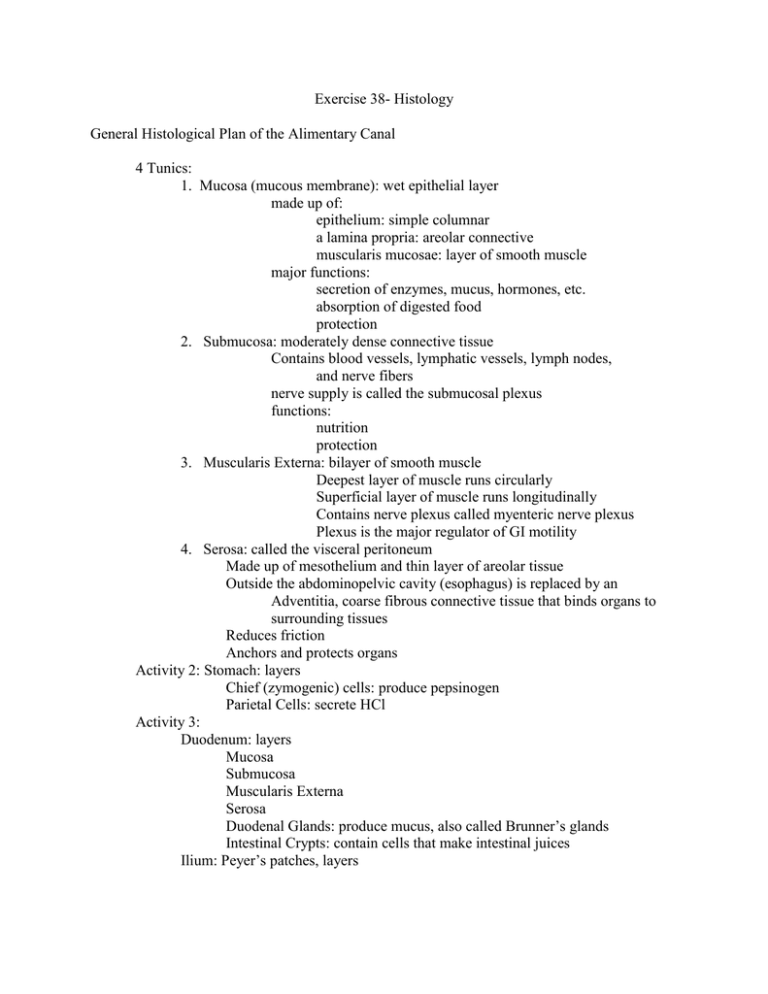
Exercise 38- Histology General Histological Plan of the Alimentary Canal 4 Tunics: 1. Mucosa (mucous membrane): wet epithelial layer made up of: epithelium: simple columnar a lamina propria: areolar connective muscularis mucosae: layer of smooth muscle major functions: secretion of enzymes, mucus, hormones, etc. absorption of digested food protection 2. Submucosa: moderately dense connective tissue Contains blood vessels, lymphatic vessels, lymph nodes, and nerve fibers nerve supply is called the submucosal plexus functions: nutrition protection 3. Muscularis Externa: bilayer of smooth muscle Deepest layer of muscle runs circularly Superficial layer of muscle runs longitudinally Contains nerve plexus called myenteric nerve plexus Plexus is the major regulator of GI motility 4. Serosa: called the visceral peritoneum Made up of mesothelium and thin layer of areolar tissue Outside the abdominopelvic cavity (esophagus) is replaced by an Adventitia, coarse fibrous connective tissue that binds organs to surrounding tissues Reduces friction Anchors and protects organs Activity 2: Stomach: layers Chief (zymogenic) cells: produce pepsinogen Parietal Cells: secrete HCl Activity 3: Duodenum: layers Mucosa Submucosa Muscularis Externa Serosa Duodenal Glands: produce mucus, also called Brunner’s glands Intestinal Crypts: contain cells that make intestinal juices Ilium: Peyer’s patches, layers Activity 9 Pancreatic Islets: islets of Langerhans; endocrine producing cells Acinar Cells: produce hydrolytic enzymes; make up most of the pancreatic tissue

